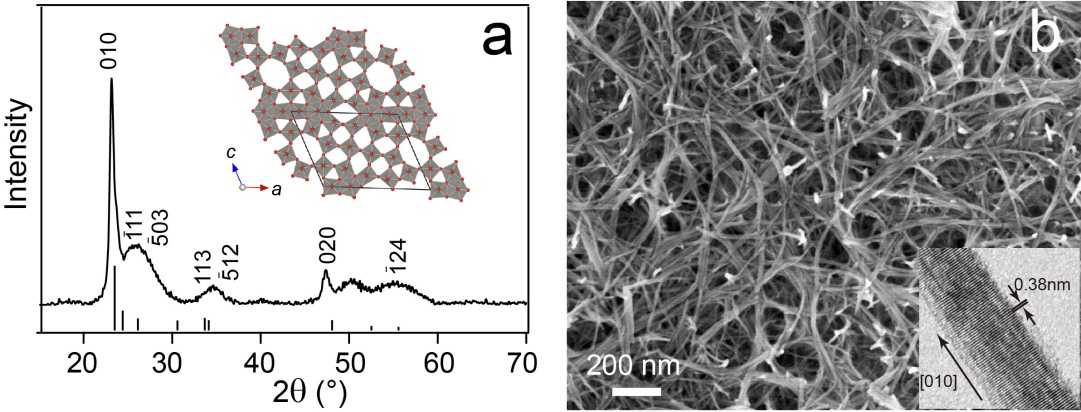Electrochromism is a process involving controllable color change through electrochemical reactions, which is interesting from perspectives of both basic science and technology. It has found important applications ranging from electronic paper like displays, antiglare rear-view mirrors in cars, to energy-saving smart windows in buildings. In the past decades, numerous efforts have been taken to achieve improved electrochromic behavior from the perspective of designing novel structures or developing novel active materials. However, today’s electrochromism still suffering from respectable disadvantages like high cost, low efficiency and poor cyclic stability, which prevent this technique from large-scale applications.
Prof. Zhao Zhigang’ research group of Suzhou Institute of Nano-Tech and Nano-Bionics (SINANO), Chinese Academy of Sciences (CAS), together with Prof. Geng Fengxia’s team from Soochow University, has concentrated on the basic issues of traditional tungsten-based electrochromic materials, with a totally fresh perspective to make several real breakthroughs. First, quasi-zero dimensional tungsten oxide (quantum dots) for electrode has been prepared for the first time, with coloration/bleaching time within 1s and a coloration efficiency of 154 cm2/C. The superior electrochromic nature over other inorganic counterpart evidences that the mass and charge transport have both been greatly accelerated when the particle of traditional electrode materials downsized into quantum size. Detailed results of this work have been published on Advanced Materials, 2014, 26, 4260-4267. Second, “smart” supercapacitor constructed with tungsten oxide (W18O49) and PANI bi-materials are originally designed, which has realized the display of energy level with the color alternation of a patterned set. Such design opens up a new field for the application of today’s electrochromic technology, detail of which has been included in Nano Letters, 2014, 14, 2150-2156.
Now, Prof. Zhao’s group have focused on the research about electrolyte of electrochromic devices, with the latest discovery pointing out that monovalent ions such as H+、Li+、Na+ are not the electrolyte most suitable for electrochromic devices, but with serious limitations such as instability, high cost, and hard handling, although widely used. They further demonstrate that the trivalent ion, Al3+, can be used as efficient insertion ion by using W18O49 nanowire as hosts, which brings the desired fast-switch, high-contrast, and high-stability as well to electrochromic devices.
The findings are important for the basic research of electrochromism filed and open a new direction for achieving the long-desired stable, durable, and fast-switching electrochromic devices, which has just been accepted and published on Advanced Functional Materials, DOI: 10.1002/adfm.201502638.
These works are supported by the National Natural Science Foundation of China (51372266, 51402204), the Natural Science Foundation of Jiangsu Province (BK20130348), and Suzhou Industrial Science and Technology Programm (ZXG201426).

Characterization of the W18O49 nanowires selected as electrochromic materials.(Image by ZHAO Zhigang's Group)


